Hazardous Tree Removal: Make safety a priority
When is a tree considered hazardous? Do you know what to look for?
Max Tree Services offer expert advice to assess hazardous trees and organise for their safe removal. But how do you know if your tree is at risk of being classified as hazardous? The older the tree, the more likely it is to show signs of weakness that can lead to it being classified hazardous. If you think any of the following are affecting your trees or garden, call Max to put your mind at ease.
Dead Wood
A tree with dead wood – whether it be branches, limbs or trunk, may look interesting in the garden, but in most instances will need to be removed as quickly as possible. This is done in the interest of safety to people, assets, and if it’s a dead limb or branch, the remaining tree to stop disease or infection.
While dead trees can become home to a variety of native fauna, it is more likely to attract another kind of inhabitant – the termite. This can be a disaster for neighbouring trees or properties. With a few modifications and an afternoon of DIY, the deadwood can be recycled or reused to provide natural habitats for nesting birds etc.
Structural Defects
How a tree grows and the soil it grows in will play a large role in how well it develops. Some trees are destined to be weak due to poor root stock or grafts. Others will develop defects due to lack of nutrients or other environmental factors. The three main structural defects to be aware of are:
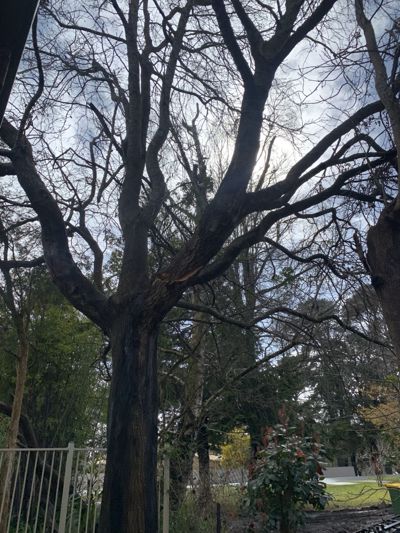
Cracks
Storms, wind, excessive canopy weight and nutrient deficiencies can all cause cracks to appear in a limb or trunk. Failure to address the issue can cause the tree to deteriorate quickly, or leave it susceptible to infection and disease.
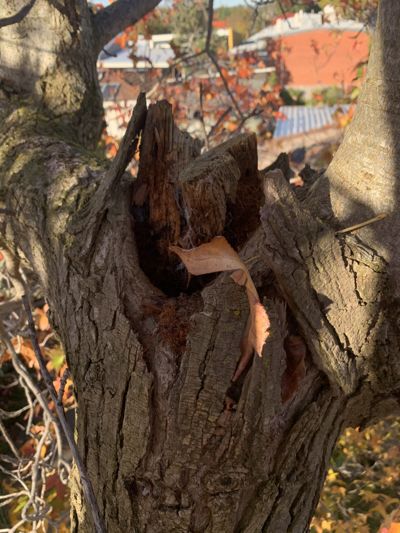
Weak Branch Unions
When a tree has two stems of equal size and shape growing at the same rate, it can cause issues for the tree, as one side is usually weaker than the other. Should the weak stem break, the tree is susceptible to infection and disease.
Weak branch unions can also occur when epicormic (sucker) branches are allowed to grow into sizeable limbs, causing an imbalance in the tree.
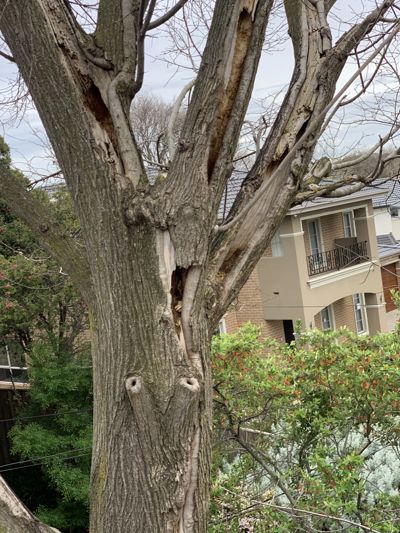
Poor tree architecture
If a tree has been pruned incorrectly over a period or had exposure to high winds and other extreme weather conditions, growth may be impaired, leading to poor tree architecture. This can be seen in trunks with bends, significant holes in the trunk, or features of the tree that look out of place.
Overhanging branches
Large branches that are growing over dwellings or fences need to be inspected regularly for signs of disease or distress. Should the tree or the limb be showing any signs, it is better to remove the limb as a preventive measure, rather than risk it falling without warning.
Branches and trees that overhang or could interfere with power or phone lines need to be cleared by qualified professionals.
Improper planting
When planting trees it’s important to pay attention to the details that predict its growth – both height and width. Planting trees too close together cause a range of problems including:
- Increased susceptibility to infection and disease due to poor air circulation
- Increase risk of structural defects from lack of nutrients from the soil
- Weakened trees because of intertwining root balls and systems
If this has happened, Max will work with you to remove the most hazardous trees and rehabilitate where possible. He will try to minimise disruption to your garden’s ecosystem.
Decay and disease
With a regular maintenance plan, decay and disease can be detected and treated in its early stages to save the life of the tree. If you notice any of the following, call Max Tree Services for an assessment and treatment or removal plan.
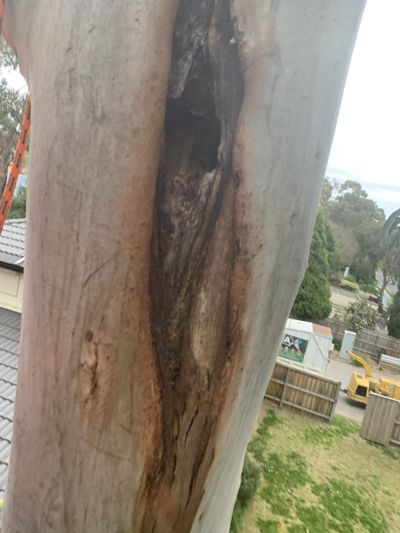
Decay
Trees affected by decay will deteriorate from the inside out so this can make it hard to detect without the help of a horticulturalist or arborist. Outward signs of decay should be checked as soon as possible
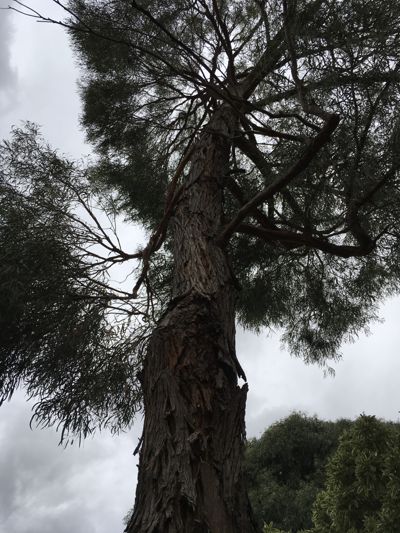
Cankers
A canker is sunken or missing bark from a branch or stem of a tree. This causes a weakness and increases the likelihood of the stem or branch breaking. Cankers can look different on different species.
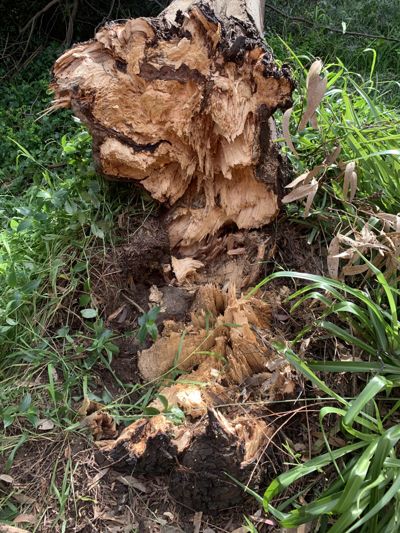
Root problems
Without a strong root system, trees are susceptible to blowing over in strong winds and storms. While roots are susceptible to infection and disease, landscaping around an established tree can also cause damage.
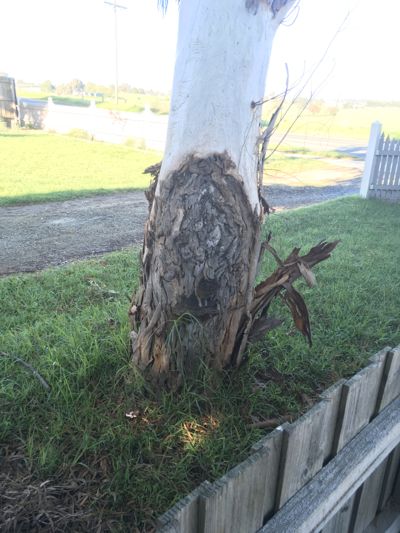
Bracket fungus
Bracket (or shelf) fungus may look interesting when it appears, but its growth starts on the inside of the limb or trunk. This means by the time you see the damage it’s usually done, and structural weakening has already occurred.




